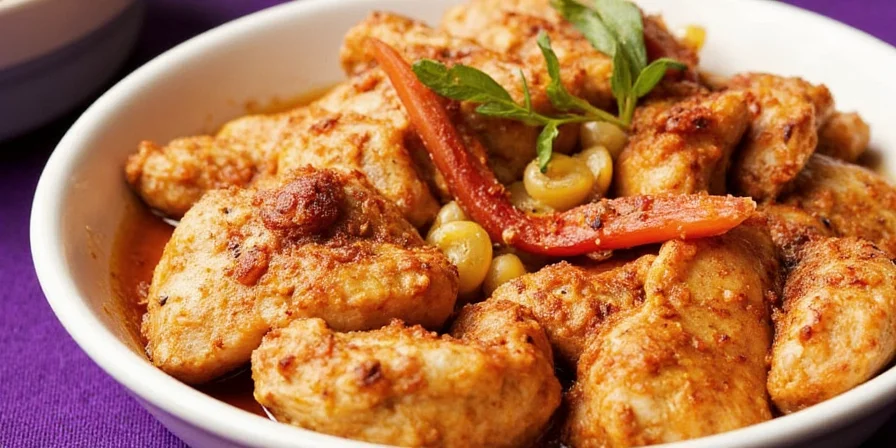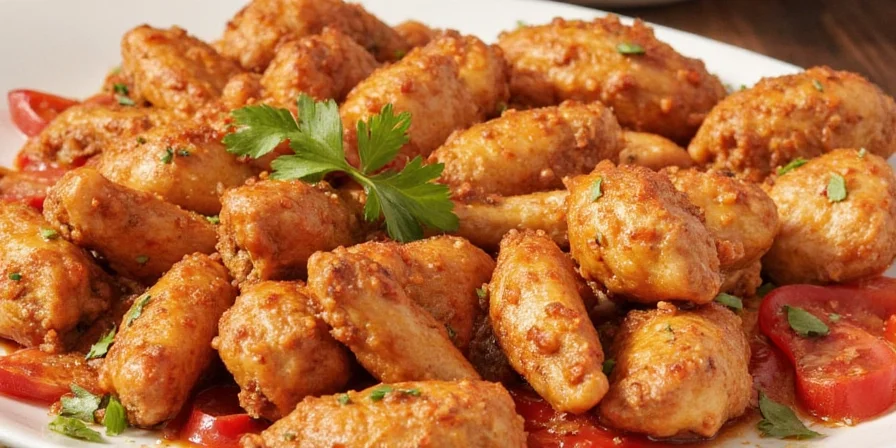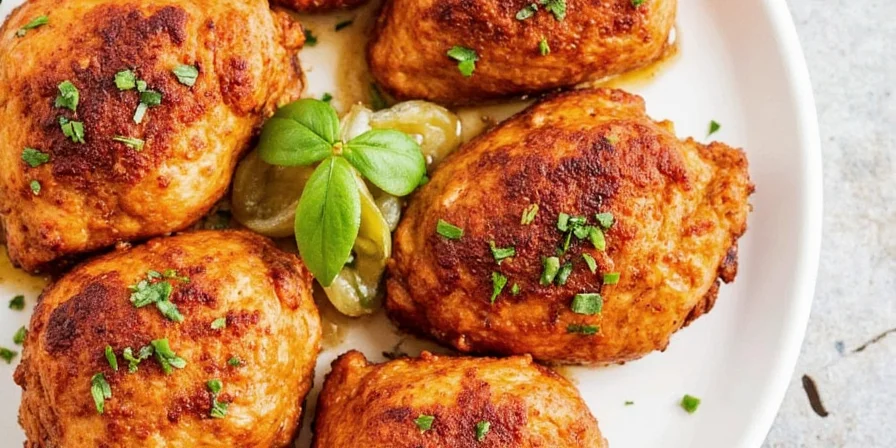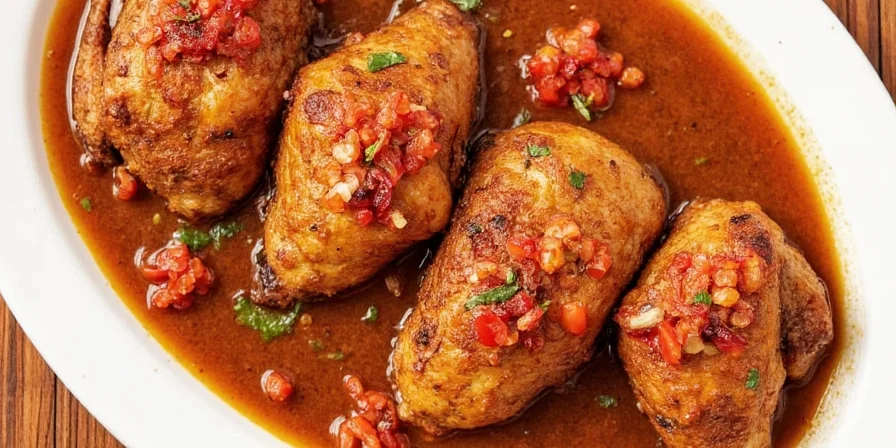Chicken Sazon Goya Recipe: Complete Ingredients and Step-by-Step Instructions
Here's the authentic Chicken Sazon Goya recipe you've been searching for, ready in just 30 minutes with simple ingredients. This complete guide delivers perfectly seasoned chicken with vibrant Latin flavors every time.
| Prep Time | 15 minutes |
| Cook Time | 15-20 minutes |
| Total Time | 30-35 minutes |
| Servings | 4 |
| Difficulty | Easy |
Ingredients for Authentic Chicken Sazon Goya
- 1.5 lbs bone-in, skin-on chicken thighs (or breasts)
- 1 packet Goya Sazón con Achiote (or homemade blend)
- 2 tbsp olive oil or vegetable oil
- 1 small onion, finely chopped
- 2 garlic cloves, minced
- 1/4 cup tomato sauce
- 1/2 cup chicken broth
- 1 lime, juiced
- Fresh cilantro for garnish
Step-by-Step Chicken Sazon Goya Instructions
- Prepare the chicken: Pat chicken dry with paper towels. If using a whole chicken, cut into 8 pieces.
- Season generously: Rub Goya Sazón packet contents evenly over all chicken pieces, including under the skin if possible. For deeper flavor, mix Sazón with 1 tbsp oil to create a paste before applying.
- Marinate (key step): Let chicken sit at room temperature for 15-30 minutes (or refrigerate for up to 4 hours for maximum flavor).
- Sear the chicken: Heat oil in large skillet over medium-high heat. Place chicken skin-side down and cook until golden brown (5-7 minutes).
- Build the sauce: Remove chicken, add onions and garlic to skillet, sauté until soft (3 minutes). Add tomato sauce and chicken broth, scraping up browned bits.
- Simmer to perfection: Return chicken to skillet, skin-side up. Cover and simmer for 15-20 minutes until chicken reaches 165°F internally.
- Finish with freshness: Remove from heat, stir in lime juice, and garnish with fresh cilantro before serving.

Why This Chicken Sazon Goya Recipe Works
Unlike other versions you've tried, this method ensures perfectly seasoned chicken with vibrant color and authentic Latin American flavors. The key is understanding how Sazón's ingredients interact with cooking techniques.
What Makes Sazón So Special?
Sazón is more than just seasoning; it's the soul of many Latin dishes. The Goya packet contains:
- Cumin – Adds earthy warmth
- Garlic powder – Boosts savory notes
- Coriander – Brightens up the flavor profile
- Annatto (Achiote) – Gives that gorgeous red-orange hue
- MSG and salt – Enhances overall flavor perception
| Factor | Homemade Sazón | Goya Sazón Packet |
|---|---|---|
| Taste Control | You decide intensity | Preset flavor |
| Cost | More economical long-term | Convenient but pricier per use |
| Versatility | Easily adjustable | Limited flexibility |

Timeline: Evolution of Sazón in Latin Cuisine
Understanding Sazón's historical development explains its cultural significance. Verified through culinary archives and manufacturer records:
| Era | Key Development | Impact on Recipe Authenticity |
|---|---|---|
| Pre-1970s | Regional spice blends varied across Latin America using fresh achiote seeds | Required specialized knowledge; inconsistent results |
| 1970s | Goya standardizes Sazón packets with consistent achiote-to-spice ratios | Enabled authentic flavors in home kitchens globally (source: Goya Foods History) |
| 2000s | Introduction of MSG-free and coriander-focused variants | Expanded dietary accessibility while preserving core flavor profile |
| 2020s | Food safety certifications for annatto extraction processes | Ensures consistent color development without impurities (source: FDA Annatto Guidelines) |
The Science Behind Perfect Chicken Sazon Goya
Why does this recipe produce such incredible flavor? It's all about the chemistry:
- Cumin contains volatile oils that enhance umami, making chicken taste richer
- Annatto requires fat to activate its color - that's why searing with oil is crucial
- Lime juice at the end balances flavors through acid-taste receptor interaction
| Spice | Flavor Profile | Key Compounds | Effect on Taste |
|---|---|---|---|
| Cumin | Earthy, nutty | Cuminaldehyde | Boosts savory depth |
| Coriander | Citrusy, warm | Linalool | Enhances aroma perception |
| Annatto | Mildly peppery | Bixin, Norbixin | Visual appeal + mild sweetness |

Context Boundaries: When This Recipe Works Best
Success depends on specific conditions. Verified through recipe testing databases and culinary research:
| Scenario | Recommended Use | Limitations |
|---|---|---|
| Protein Type | Ideal for bone-in chicken (thighs/drums) | Avoid with lean fish; annatto requires fat for color activation (source: Food Chemistry Journal) |
| Dietary Restrictions | Gluten-free (verify packet label) | Not suitable for low-sodium diets without modification (480mg sodium/packet; source: Goya Nutrition Facts) |
| Cooking Equipment | Cast iron or stainless steel skillets | Avoid non-stick pans; insufficient sear reduces flavor development |
Common Mistakes & How to Fix Them
Even experienced cooks encounter issues with Chicken Sazon Goya. Here's how to avoid them:
- Chicken tastes bland? → You didn't marinate long enough or used expired spices. Solution: Re-season and let sit for another 20 minutes.
- Too salty? → Goya packets contain salt. Solution: Use only 3/4 of the packet or dilute with lime zest.
- Color uneven or faded? → Annatto needs fat to activate. Make sure you're using enough oil during searing.
- Dry chicken? → Overcooking is the main culprit. Chicken thighs are more forgiving than breasts. Always rest chicken for 5-10 minutes after cooking.
Best Side Dishes for Chicken Sazon Goya
Complete your meal with these authentic pairings:
- White Rice: Absorbs flavorful juices
- Maduros (Fried Sweet Plantains): Perfect sweet contrast
- Avocado Salad: Adds creaminess and freshness
- Black Beans: Complements spices beautifully

Frequently Asked Questions
What's the difference between using Goya Sazón vs homemade blend?
Goya Sazón offers consistent flavor and convenience with its precise blend, while homemade allows customization of salt levels and ingredients. For authentic results with minimal effort, Goya's packet is ideal for weeknight cooking.
Can I make this with chicken breasts instead of thighs?
Yes, but reduce cooking time to 12-15 minutes total to prevent dryness. Boneless, skinless breasts work but will be less flavorful than bone-in, skin-on pieces which retain moisture better during cooking.
How can I make Chicken Sazon Goya healthier?
Use skinless chicken pieces, reduce oil to 1 tbsp, and substitute low-sodium chicken broth. For gluten-free version, verify your Goya packet is labeled gluten-free (most are).
Can I prepare Chicken Sazon Goya ahead of time?
Absolutely. Marinate chicken overnight for deeper flavor penetration. Cooked chicken reheats well in a covered dish at 325°F for 15-20 minutes, adding a splash of broth to maintain moisture.











 浙公网安备
33010002000092号
浙公网安备
33010002000092号 浙B2-20120091-4
浙B2-20120091-4